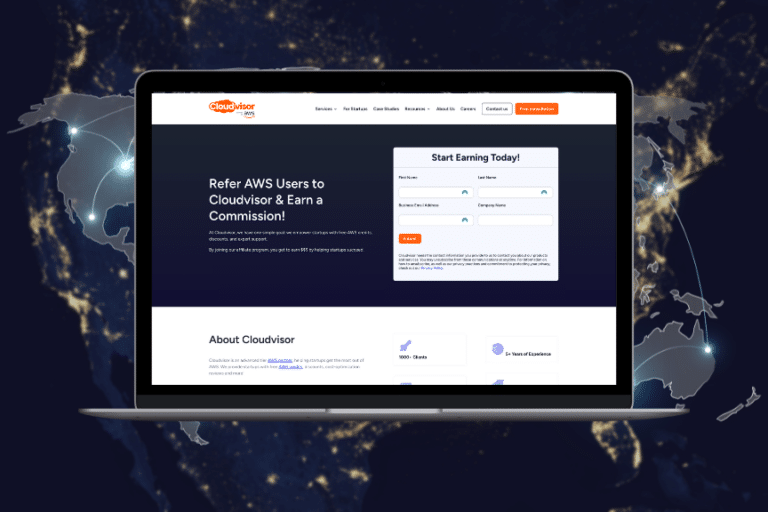Automation is the key to building truly scalable AWS cloud-based products. It allows you to eliminate the need for your dev team to focus on routine, repetitive work, and instead have them concentrate on building a better product. Unfortunately, automation is a double-edged sword, and if you don’t approach it the right way, you might find yourself creating automated errors at scale.
In this article, we’ll take a dive into automation in AWS DevOps, and how you can do it the right way.
Why is Automation Important for DevOps?
Over time, DevOps automation has become less of a question, and more of a requirement. DevOps automation covers the setup, configuration, deployment, and support of the infrastructure that your applications run. The ultimate goal is to be able to rapidly ship new versions of software applications with high reliability.
The drive to automation happened because manual processes were too error-prone and unreliable to function in an agile business model, and It became necessary for development teams to use automation in order to more efficiently use their time.
This is why modern operating environments rely on full automation to limit manual intervention or access to production environments. It enables you to create a new production-ready version of your application every time you make any change to your app or its environment.
It is also why it is essential for your DevOps team to put Automation at the core of their long-term strategy from day one. There are a number of benefits to taking an automated approach:
- Standardization – In order for automation to work, a DevOps team needs to adopt standardized practices. This helps to ensure that everyone is on the same page and makes it easier to identify, replicate, and resolve bugs or errors in your environment.
- Scalability – These standardized processes make it simple for your DevOps team to launch new configurations or containers for your application, making it possible for you to scale up rapidly without needing to replicate thousands of small manual processes.
- Robustness – Automation will include the ability to update and maintain your environment. This means that there is less risk of downtime and if it does happen there will be clear guidelines already in place for your team to conduct disaster recovery.
- Quality Assurance – Once the pieces are in place, it is possible for your team to implement automated tests that will screen for common problems, enabling you to catch them before your user does.
- Cost Efficiency – Automation can provide elasticity to your environment. This allows you to scale your operations up or down dynamically based on user demand, improving efficiency and reducing your overall costs.
How Can My Team Use DevOps Automation?
Automation can be used at every single stage of the application deployment process.
- Continuous Integration (CI) lets you commit, run tests, and perform security checks against your existing source code every time you make a change, to help you understand the impact of any changes made.
- Continuous Delivery (CD) enables you to create a new, deployable package from every check-in.
- Continuous Deployment helps you ship your code to your dev, test, and production environments.
- Infrastructure as Code (IaC) means you can spin up all the components necessary to support your application in production, this lets your team reliably create, destroy, and re-create your entire application environment.
- Monitoring ensures that you can understand the quality of your changes, and alerts you if anything isn’t working as it’s supposed to.
Cloudvisor Newsletter
Not Another Newsletter!
Stay up-to-date on the latest news about AWS and unlock the full potential of your startup with our monthly newsletter, “Not Another Newsletter!” 💡
s AWS a Good Tool To Automate DevOps?
The short answer is yes. Automation is one of AWS’s DevOps core philosophies, and it is baked into the platform itself. AWS has invested in tools that make it easy for teams to implement IaC best practices, enabling development teams to define all the infrastructure their application needs to run in its source code.
This means that AWS is an all-in-one DevOps platform. Rather than needing to stitch together different tool sets from different companies into a DevOps deployment pipeline, your team can use solutions that are designed to be integrated together. This reduces the amount of legwork that your team needs to do.
One of the best examples of AWS’ IaC approach is AWS CloudFormation. CloudFormation is a declarative language that you can use to create the entire architecture for your application, and nearly every AWS feature can be implemented using it.

How Can I Access AWS DevOps Tools?
The good news is that the main AWS DevOps tools you need can be found in a single interface. The bad news is that it’s not immediately clear how to actually find it. There’s no “DevOps” menu section in the AWS management console, however, you can navigate there by searching for a service that’s part of the AWS DevOps Stack.
Properly using a group of tools that broadly mirror the application development process will give you the needed foundation to really begin your AWS automation journey:
- CodeCommit – is a service that hosts your private Git repositories, it lets you collaborate on code as you build your source code repository, and control access using the AWS Identity and Access Management (IAM) system.
- AWS CodeArtifact – This lets you define where your project builds are stored and ensure that your team is always pulling its dependencies from a known, reliable source. It also helps your team share the outputs of its projects with other teams in your company, breaking down organizational silos.
- AWS CodeBuild – Eliminates the need to provision, manage, or scale your own build servers. You simply specify the location of your source code, select the appropriate build settings, and CodeBuild will run the build scripts for compiling, testing, and packaging your code.
- AWS CodeDeploy – This enables you to automate code deployment without downtime. This can help you implement deployments across various deployment groups. You can define percentages of users that will get the new deployment, and implement automated roll-backs if a problem is detected.
- AWS CodePipeline – This empowers you to build an application deployment pipeline automatically. You can customize your pipeline at each stage of the deployment process, receive notifications for specific events through the Amazon Simple Notification Service, (SNS), or control who has access with IAM.
Aside from these general tools, there are two main ones that will make it easier to automate your AWS DevOps processes. The first is AWS Elastic Beanstalk, which is an abstraction on top of Amazon EC2 and other core AWS services. It simplifies deployment by providing you with additional features such as cloning, blue/green deployments, and integration with AWS toolkits.
The second, and most powerful tool, is AWS OpsWorks. It is more of an application management service than Elastic Beanstalk and provides a number of additional features. This includes integration with configuration management software and application lifecycle management. With OpsWorks you can define application stacks, which contain all the provisioning for AWS resources that your application requires.
OpsWorks is also helpful because it is integrated with Amazon CloudWatch. CloudWatch allows you to collect information on how your application is performing, and set performance and operational alarms with associated automated actions. This helps your team respond in real time and eliminates the need for 24/7 manual watching of your applications.
Learn How To Automate AWS DevOps With Cloudvisor
While AWS has done a lot to make the process simple, implementing a solid DevOps automation strategy is still a gargantuan task, especially for a startup team that may be stretched for resources. This is where specialized teams, like the ones here at Cloudvisor, can prove invaluable.
Our team works exclusively with startups, so understands the importance of properly implementing automation strategies from day one, and can help your team design, implement, and then maintain an AWS DevOps automation strategy.
If you’d like to learn more about how we can help, contact us today, or check out our success stories.





